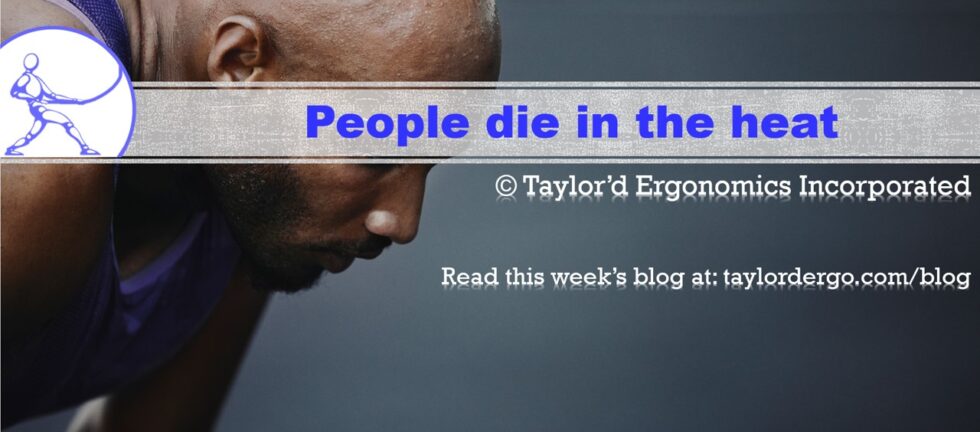Am I being overly dramatic? Not at all. Last year in Ontario, the WSIB accepted 94 claims for “Heat and light effects including heat stroke, fatigue and syncope”. Unlike strain/sprain hazards, heat stress CAN cause death. So please don’t take the topic too lightly. Handing out frozen treats and energy drinks might not cut it when temperatures soar.
It’s late in the season for us to help you with your heat-stress prevention program, but we do encourage you to create a solid 2025 plan before spring, by evaluating job demands and creating a protocol for hot weather, including a work-rest schedule that you can implement effectively. Your program should include training for heat stress responders (the people who will put the plan in action), and awareness training for workers (so they know what to expect, and how to protect themselves).
Proposed new Ontario legislation promotes the use of the ACGIH guidelines (which we have always used in our heat stress prevention programs), but it also allows the use of alternative metrics, including personal monitoring in some situations.
For now, here are five key takeaway points, to consider at work and at home:
- Bottoms up! Drink more water than your thirst demands. If you are thirsty, you are already dehydrated. Stay ahead of the problem by drinking more water than you think you need. It’s difficult to drink too much.
- Sweat it early. If your schedule offers any flexibility, do the heaviest work in the coolest part of the day. Roofing is much more tolerable at 5 a.m. than it will be at 5 p.m.
- Dress for success. Light-coloured, lightweight, wicking fabrics help to draw sweat away from your body and avoid the intensification you’d get with that stretchy black catsuit you wear at Hallowe’en. Short sleeves and short pants, where they are safe to wear, allow sweat to evaporate, which cools your skin.
- Take a break. If the show must go on, and you absolutely must do heavy work in the heat, take frequent breaks, in a cooler location if possible.
- Buddy up. Make an agreement with a co-worker to keep an eye on each other. Signs of heat-related illness include:
- Muscle cramps, pain, or spasms in the abdomen, arms, or leg
- Red clusters of pimples or small blisters, usually on the neck, upper chest, groin, under the breasts, and in elbow creases
- Headache, nausea, dizziness, and weakness
- Irritability
- Thirst
- Heavy sweating
- Elevated body temperature
- Decreased urine output
- Confusion, altered mental status, slurred speech
- Loss of consciousness (coma)
- Hot, dry skin or profuse sweating
- Seizures
- Very high body temperature
Proactive heat stress prevention tip: This year, keep meticulous records of outdoor temperature and humidity, indoor heat readings, and relief provided in each part of your facility. Note when dock doors are opened and closed, and where fans are located. At the end of the heat stress season, we can help you to review these to identify opportunities for next year’s heat prevention program. (Get a quote from Info@TaylordErgo.com)
We’ll look for cost-saving measures:
- How many measurements do you really need to take on an hourly basis?
- Are there any hotspots in your facility that you could address with engineering controls, to reduce downtime?
- What is the relationship between outdoor and indoor temperature? Do dock doors play any role in this?
- Are workers becoming acclimatized?
- If you have areas where moderate or heavy work is performed, what seasonal changes could you make to those jobs to bump them down a category?
- Is job rotation contributing to relief from heavy work?
- Are your fans helping?
Have a safe summer!
Resources:
https://www.ccohs.ca/oshanswers/phys_agents/temp_legislation.html
https://www.cdc.gov/niosh/topics/heatstress/heatrelillness.html


